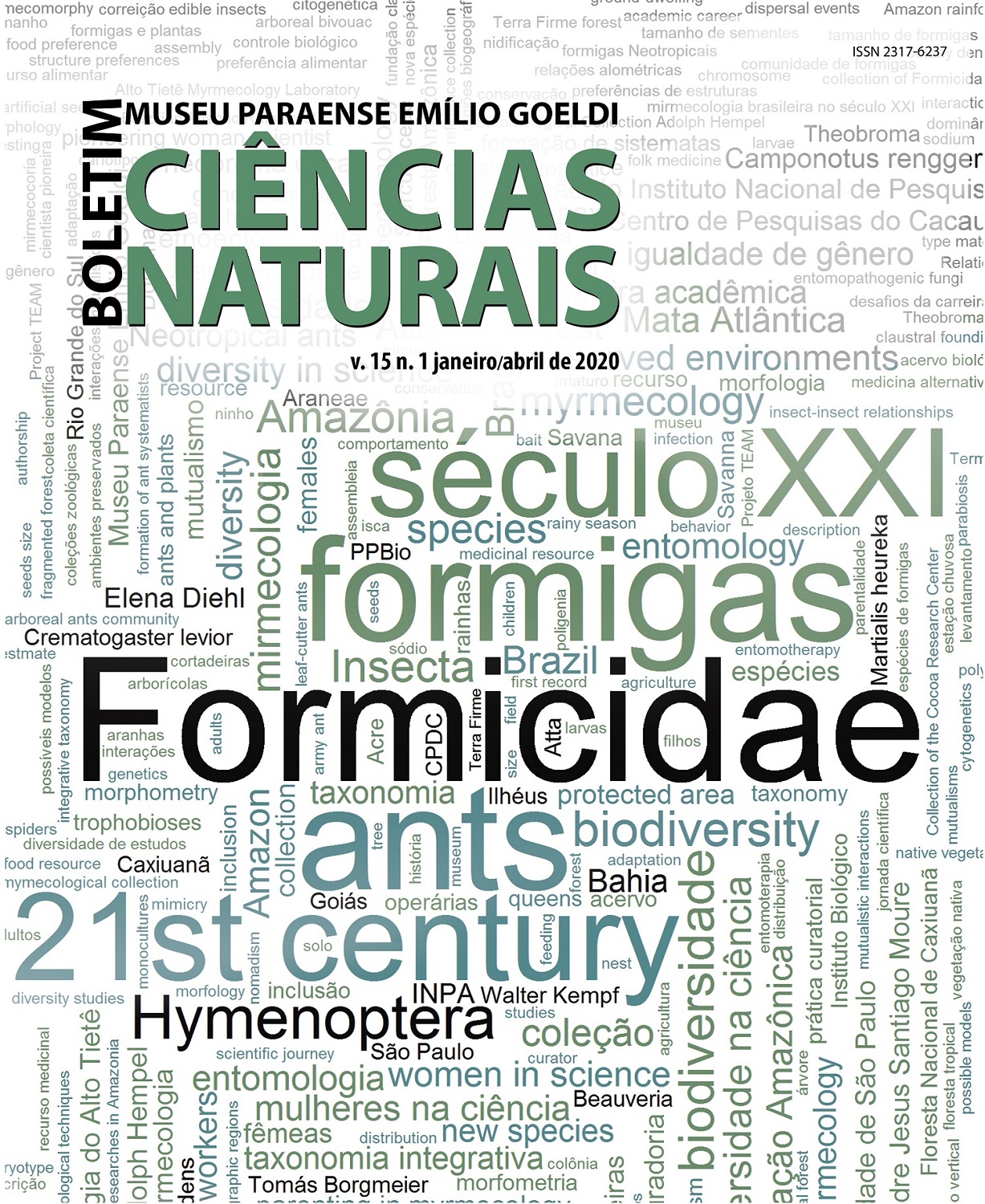Allometric relationships between artificial seeds size and ants size in dispersal events in a fragmented forest in Central Amazonia
DOI:
https://doi.org/10.46357/bcnaturais.v15i1.283Keywords:
Behaviour, Myrmecory, Tropical forest, MutualismAbstract
Ants are the main invertebrate seed dispersers found on the forest floor. However, we still know little about the natural history of ant species and how they act on seed dispersal. Aiming to find allometric patterns between ants and seeds that can be extrapolated to other locations and other ants species, we compared artificial seed models with seed sizes and relate them to ant size. Artificial seeds were placed in six transects with 10 points each, at the campus of the Federal University of Amazonas, Manaus. Twenty species of ants interacting with artificial seeds were recorded. Ants of the genus Ectatomma removed the larger amount of seeds, followed by Pheidole, Odontomachus and Pachycondyla. The longest dispersal distance was 5.10 m, realized by E. brunneum Smith, 1858. Ants smaller than 2 mm did not remove any of the artificial seed models. In all interactions with artificial seeds, these ants only cleaned the aryls on the spot where the seed was offered. Our results reinforce that the quality of seed dispersal will depend on the identity of the partner, but also that the larger ants may remove more seeds and at greater distances more often.
Downloads
Published
Issue
Section
License
Publication means fully assigning and transferring all copyrights of the manuscript to the journal. The Liability Statement and
Assignment of Copyrights will be enclosed with the notice of acceptance. All the authors must sign the document and return it to the journal.






